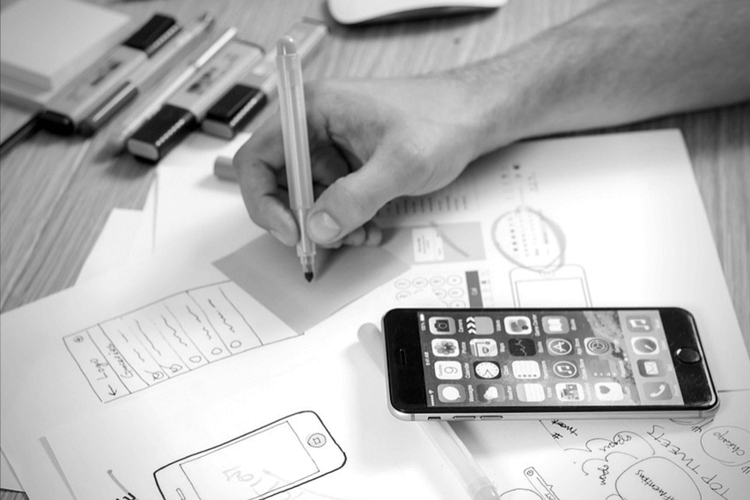This three-part series ‘Developing an App – what you NEED to know’ will focus on app development education and bring you up to speed with the basic facts, including the terminology, people, processes, pitfalls and other useful information related to getting an app developed.
I’ll go over valuable information that anyone looking to get an app developed, or at least begin the process, needs to know.
Recently I’ve found a general lack of knowledge from people surrounding app development and if you’re having an app built you should at least have a basic knowledge of who and what is involved. This article won’t just be buzz words and lingo that you can throw around to sound like you know what you’re talking about, but will instead give you context and information you can reference when needed.
Part 1 will go over some basic terminology that’s important for everyone to know related to app development and the people involved in bringing your app to life.

THE TERMINOLOGY
First, we’ll start with the terminology and definitions that you should know:
User – Someone who downloads and uses your app.
User Base – The collective of users who use your app.
iPhone – A type of mobile phone developed exclusively by Apple and will generally be the phone that over 50% of your user base uses.
Android Phone – A type of mobile phone developed primarily by either Samsung & Google, but not exclusively. If your user base isn’t using an iPhone they’ll be using an Android Phone.
iOS – This is the name of the software that was developed by Apple and makes iPhones run. An app will be developed for iOS to run on an iPhone.
Android – This is the name of the software that was developed by Google and makes Android phones run. An app will be developed for Android to run on an Android Phone.
User Experience – How users engage with your app, from the buttons they press to the animations they see. User experience is crucial in keeping users engaged with your app.
User Interface – How users interact with your app. The user interface is generally determined in the initial wireframes for an app.
Design – How each of the screens in your app looks and feels. Designs dictate the final appearance of your app. What you see at the design stage should be a pretty close representation of your final app.
Wireframes – A blueprint of your app that shows how each screen will be laid out but does not represent the final design, only where the content will be positioned in the user interface.
Development – The process of bringing your app to life, from an idea and the designs. Development takes the designs of your app and uses programming to create an app that you can actually install on your phone.
Native App – One of the ways an app can be built. A native app can be downloaded like any other app and is the most common app you come across. Native apps generally provide users with an engaging experience and interface by using the technologies recommended by Google and Apple. Native apps require separate development for iOS and Android.
Web App – One of the ways an app can be built. A web app can download like any other app but feels and behaves more like a website. Generally, web apps put a focus on templated designs and speed of development at the cost of user experience. Web apps can be developed once and used on both iOS and Android devices.
Hybrid App – One of the ways an app can be built. A hybrid app can be downloaded like any other and is generally a simplified native app. Hybrid apps generally provide a better user experience than web apps but sacrifice some user experience and design for a simplified development process. Hybrid apps are developed using third party software that allows for the parallel development of the iOS and Android versions of an app.
Beta – The name of a stage near the end of your app’s development where all of the functionality should be complete. The beta stage is when you would first get your hands on your app to test it out.
Scope – The agreed upon limitations and functionality of your app.
MVP (Minimum viable product) – The bare minimum scope required to get your app out to the public.
App Store – The platform/app used by iPhone users to download apps.
Google Play – The platform/app used by Android phone users to download apps.
THE TEAM BEHIND YOUR APP
Now we’ll go through the people who will be involved in your project in one way or another:
Sales – Your first point of contact, and the person who will guide you through the initial stages of your project.
Project Manager – Your main point of contact once your project is kicked off, and the person who will make sure your project stays on track and fulfils all of your requirements.
Designer – Responsible for putting pen to paper and coming up with the look, feel and experience of your app.
App Developer – Responsible for taking the concept and designs of your app and using programming to create the final product that users can download and use.
iOS App Developer – The app developer responsible for creating your iOS app.
Android App Developer – The app developer responsible for creating your Android app.
Note: These can be the same person.
QA(Quality Assurance)/Tester – Responsible for testing your app and making sure that everything within scope has been met and works as expected.
Marketer – Responsible for getting your app out into the world and seen by the public.
And last but not least…
You the client! The most valuable person on the team. It’s your job to convey your ideas and goals for your app so you can get the best possible results. We hate to see people with a great idea but lack the drive to follow it through. At the end of the day, your idea will only go as a far as you’re willing to put in the effort.
That’s it for part 1! If you have any questions about app development, or if there’s something specific you’d like us to cover in the rest of this series, don’t hesitate to get in touch with us.
APP DEVELOPMENT: WHAT YOU NEED TO KNOW – PART 2
APP DEVELOPMENT: WHAT YOU NEED TO KNOW – PART 3


